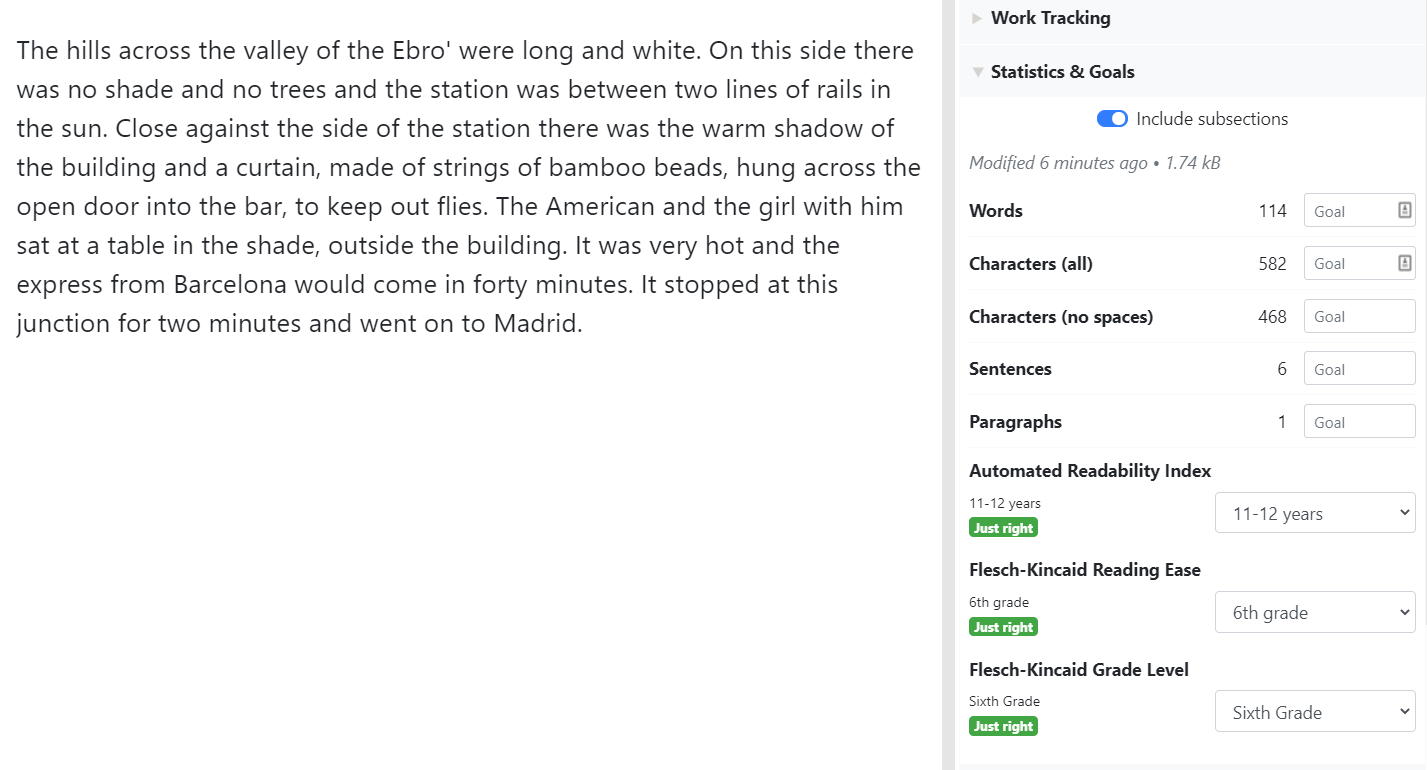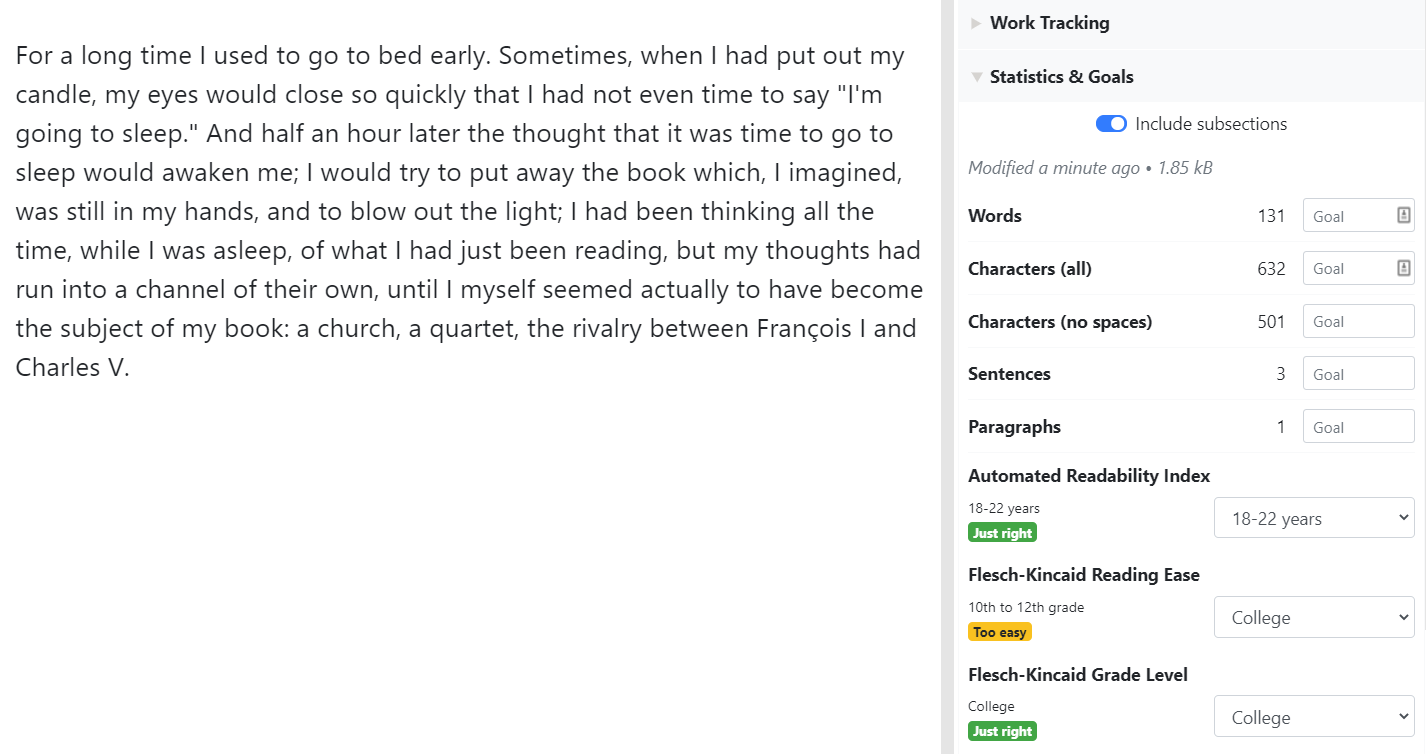Text statistics and goals
Text statistics are calculated with section granularity and are cumulated for subsections and binders, so you know exactly how many words (and characters, sentences, and paragraphs) you have in any of these items since we account for nesting.
This is the same for readability statistics. We currently compute the Automated Readability Index, the Flesch-Kincaid Reading Ease, and the Flesch-Kincaid Grade Level readability scores.
These computations are done in real-time, so if you keep your right sidebar open you can see them updated as you type, no need to leave Novelitist and use other tools for this purpose.
For each of these metrics (text counts and readability scores), you can set goals. The text will then be measured against these, and you will always know where you stand in relation to them.
Here's how it works, using this very document as an example.
The readability scores deserve some belaboring.
Note that these readability scores don't necessary agree with each other — that's why there are more of them. Together they give you the best estimation about how difficult your text is. Remember that this is an estimation only, and it doesn't make or break the literary value of your work.
Looking at these scores is more useful when you are specifically and unapologetically targeting a certain audience. For example, writing for kids is a perfect example: Accounting for this score will keep you from writing long, convoluted sentences that kids won't easily understand.
The rules for the readability scores are simple. When you select a target audience, your text will be evaluated and you will get a simple verdict:
Easily understood
Your text will be easy to understand for your target audience. Easy comprehension is never a bad thing. However, you may intentionally want to write a difficult passage to illustrate the pomposity of a character, for example. If that passage is easy to understand, you may want to make it harder.
Just right
Your text has the right difficulty for your chosen audience. This is probably the sweet spot, where your audience is challenged, but not annoyed with your writing's opacity resulting from factors that these scores can catch.
Too hard
Your text is too hard to understand by your target audience. You may want to review your text, especially if you are aiming for younger readers and simplicity.
Ultimately, do take the readability scores with of grain of salt. To prove a point, have a look at the following examples. Enter Ernest Hemingway:

A hundred and fourteen words make up a paragraph that's just right for sixth graders in terms of reading ease.
Along comes Marcel Proust:

A hundred and thirty-one words (about the same amount as Ernest's passage) make for a paragraph that's suited to people around college age.
Like these two illustrious predecessors, you can make great literary art in your own way, and that's the only way for you. Our tools are only here to help you orientate, and then you must still do whatever you feel like.